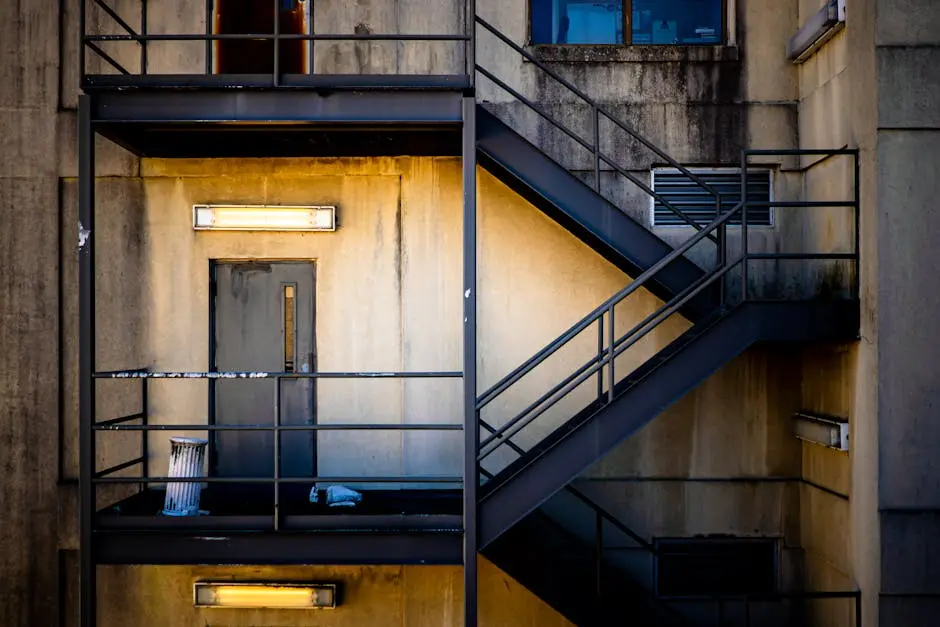Ensuring building safety is crucial, and one aspect that often goes unnoticed is the fire escape. In Los Angeles, a city bustling with high-rise buildings and aging structures, conducting annual fire escape load tests is essential and a legal requirement. These tests ensure fire escapes can hold people’s weight during an emergency, potentially saving lives. Let’s explore why these tests are essential and what you need to know about them.
Understanding Fire Escape Load Tests
Fire escape load tests are designed to assess fire escapes’ structural integrity and capacity. These tests involve applying a specified load to the escape route to ensure it can support the weight of individuals during an evacuation. Typically, this is achieved by simulating the weight using sandbags or other heavy materials. Engineers then closely monitor the fire escape for signs of stress or failure.
A load test is not just a formality; it’s a detailed check-up on the health of your fire escape. This testing can identify weak points, rust, or structural damage that may not be visible during a regular inspection. Property owners can ensure that the fire escape will perform as expected during an emergency by routinely testing the load capacity.
These tests are a proactive measure to prevent tragic outcomes during real-life emergencies. The safety of occupants in high-rise buildings largely depends on these critical structures, making it essential to ensure they are always in top condition. Regular tests can save lives by confirming that fire escapes are safe, robust, and ready for use at any time.
Why Los Angeles Buildings Particularly Need These Tests
Los Angeles has a unique combination of aging buildings and high-occupancy structures, making it vital to ensure fire escapes are in excellent condition. The city is also prone to earthquakes, which can significantly impact the structural integrity of buildings, including fire escapes. Regular load tests help identify and mitigate potential risks that earthquakes might introduce.
The density of population and the verticality of many residential and commercial buildings mean that a single compromised fire escape can lead to a significant life-threatening outcome. Moreover, the historical nature of many structures implies that maintenance might have been overlooked over the years, heightening the risk of mechanical failures during emergencies.
Another factor to consider is Los Angeles’s legal landscape. The city’s strict building codes stipulate that fire escapes must meet specific safety standards, making tests essential and mandatory. Regular testing aligns with city ordinances and protects property owners from significant fines and legal liabilities.
What Happens During a Fire Escape Load Test
During a load test, professionals apply a force to the fire escape that simulates people’s weight. This might involve using weights. Engineers then inspect the escape for any signs of stress or failure. They scrutinize every part, checking bolts, joints, and metal components for signs of wear and damage.
Load tests are thorough procedures, often involving multiple stages where weights are incrementally added to replicate different scenarios. This helps us understand how the fire escape would perform under sudden loads, such as during an actual emergency evacuation. The data gathered from these tests provides invaluable insights into the overall safety and robustness of the escape system.
Additionally, the inspection may include a review of the fire escape’s accessibility and the condition of pathways leading to it. It’s crucial that occupants can reach the escape easily and that the path is free of obstructions. Addressing these aspects ensures that every part of the safety route contributes to a swift and efficient evacuation process.
Steps to Ensure Compliance
Property owners should schedule tests with certified professionals and maintain clear records of inspections. These records can prove compliance and are crucial during audits or safety inspections. Working with experts like West Coast Fire Escapes ensures that every aspect of the fire escape meets stringent safety standards.
Maintaining an open line of communication with local safety inspectors and understanding the specifics of city regulations are also essential steps. Regularly consulting fire escape inspections and utilizing their experience can aid in maintaining a high standard of safety.
The Role of Property Owners in Ensuring Safety
Building owners play a crucial role in maintaining safety standards. Understanding the importance of load tests and taking proactive measures can protect residents and tenants, reducing the risk of injuries during an emergency. Regular maintenance and repairs are part of this proactive approach and they involve diligently inspecting and rectifying any faults or weaknesses identified.
Beyond the physical aspects, property owners can also foster a culture of awareness and preparedness. Regular fire drills and informing tenants about the location and use of fire escapes enhance the overall safety environment. Education sessions and safety workshops can go a long way in ensuring everyone knows how to act during an emergency, ultimately reducing panic and improving response times.
Property owners are the first line of defense in ensuring building safety. Their diligence in maintaining and testing fire escapes can be the difference between life and death in critical situations. Prioritizing such safety measures ensures compliance and fosters a secure living and working environment for all occupants.
Prioritizing Safety with Annual Checks
Fire escape load tests are critical to building safety in Los Angeles. They ensure that emergency escape routes are reliable and can support the weight of building occupants during a crisis. By understanding the importance of these tests, property owners can take the necessary steps to maintain compliance with safety regulations and protect the people who live and work in their buildings. Prioritizing these tests is prioritizing safety and, ultimately, saving lives.



